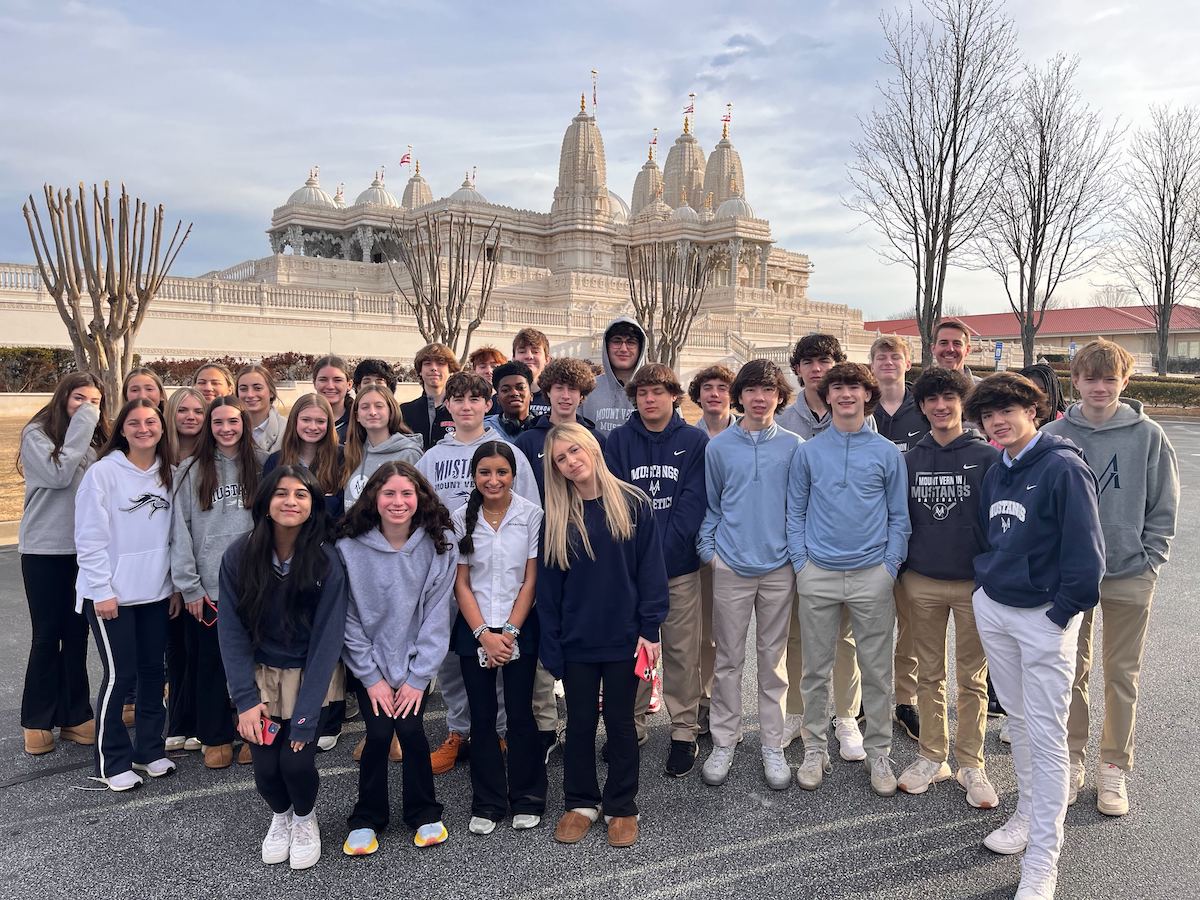Mod 3 saw the return of a class that hadn’t been taught at Mount Vernon since before the pandemic. With a background steeped in pastoral care and education, Upper School science teacher Josh Amerson led the two sections of World Religions for Grade 9 students. As our mission states, Mount Vernon is grounded in Christian values, as we prepare all students to be college-ready, globally competitive, and engaged citizen leaders, the World Religions course sought not only to educate but to empower students to embrace diverse perspectives and foster empathy in an ever-evolving world.
The nine-week course commenced with explorations of foundational stories from various religious traditions, inviting students to ponder the mysteries of existence and creation. Guided by Mr. Amerson’s unwavering commitment to fostering empathy, students delved into the core beliefs and practices of different faiths, grappling with questions of morality, ethics, and spirituality along the way.
 Through thoughtful discussions and introspective exercises, students were encouraged to confront their own biases and preconceptions, paving the way for deeper connections and mutual understanding. As the weeks unfolded, students were tasked with envisioning a more inclusive future for their school community—an endeavor that echoed Mount Vernon’s mission of preparing students to be engaged citizen leaders in a global society. From designing interfaith worship spaces to reimagining sacred rituals, their creativity and compassion knew no bounds. Through their projects and discussions, students not only broadened their own horizons but also became catalysts for positive change within their community.
Through thoughtful discussions and introspective exercises, students were encouraged to confront their own biases and preconceptions, paving the way for deeper connections and mutual understanding. As the weeks unfolded, students were tasked with envisioning a more inclusive future for their school community—an endeavor that echoed Mount Vernon’s mission of preparing students to be engaged citizen leaders in a global society. From designing interfaith worship spaces to reimagining sacred rituals, their creativity and compassion knew no bounds. Through their projects and discussions, students not only broadened their own horizons but also became catalysts for positive change within their community.
Throughout the course, there were expeditions to the BAPS Hindu Mandir in Lilburn and a visit from Holocaust survivor, Hershel Greenblat.
“One of the last projects they were invited to work on was to think about the difference between sacred and secular and design an interfaith worship space to have on campus. Some adapted the gym by putting up different symbols from different faiths and making it a little more inclusive. Others created totally innovative designs including exploring spaces outdoors. Like the Buddha who meditated under a tree. They started to put all these pieces together, recognizing you can still be authentically connected to your own faith while creating space for others to be able to be connected to theirs, and then find those points where we can connect and grow from each other. A couple of them built physical adaptations. They were just so thoughtful, empathetic and compassionate,” Mr. Amerson explained.
Looking ahead, the future of the World Religions class shines bright. Plans are underway to offer the course next year to upperclassmen. The course exemplifies our belief that relationships are foundational and by fostering understanding empathy can take root and pave the way for a brighter, more interconnected future.




